Charlie Chaplin The Life Story of Charlie Chaplin -- a rare, unreleased, 35mm, black and white silent film , written and produced by Harry B. Parkinson, circa early 1928, photography by Frank Canham -- the film approx. 38 mins. long gives a unique pictorial account of the South London of Chaplin's childhood and some of the people and places that influenced his early life and career; for the London scenes, Parkinson used the device of a Chaplin 'shadow' [played by Chick Wango] revisiting his old haunts; the course of the three-part film is as follows: -- A contrast is drawn between Chaplin's Beverly Hills home and the London streets where he grew up, Parkinson suggests that East Street in Walworth [Chaplin's supposed birthplace] could have been the inspiration for the film Easy Street and that the famous trousers and boots of Chaplin's trademark tramp costume may have been inspired by the every-day clothes Chaplin saw worn in East Lane market; -- Background details of Chaplin's family origins via his father, a Music Hall singer are given and footage of various schools supposedly attended by Chaplin follow including: The Infants School, Lambeth Road, St. Mary the less Boy's School and Hercules Road School; -- Footage of various spots allegedly frequented by Chaplin as a child include: Westminster Bridge, Lambeth Baths, Pownall Terrace, [3 Pownall Terrace, Lambeth, reserved a special place in Chaplin's affections, contemporary newspaper reports of Chaplin's triumphant return to London in 1921 state that he made a sentimental visit one night to his lodgings at 3 Pownall Terrace; and Chaplin also referred to visiting this address in his transatlantic broadcast to Lambeth in 1943] Kennington Park Gymnasium, Lambeth Beach, Doulton's Dock and Lambeth Parish Church, Parkinson makes a number of suggestions for inspiration Chaplin may have received from these places including the proposal that Lambeth Parish Church where Chaplin [according to Parkinson] was a chorister, may have been the source of his ideas for the angelic scenes in The Kid ; -- Footage of Mr John Jackson follows, founder of The Eight Lancashire Lads , to whom Chaplin owed his first professional engagement; then footage of Dan Lipton, a former Music Hall artist seen in the shop to which he retired, Lipton according to Parkinson, wrote the famous 'Casey Court' sketch and arranged for Chaplin to be engaged in Casey's Court Circus after seeing him out of the window of 14 Walcott Gardens, amusing his friends in the yard below; footage of Fred Karno follows and an explanation of how as a result of being sent to the U.S.A. by Karno, Chaplin came to the attention of film producer Mack Sennett, an association that resulted in Chaplin's first screen appearance in 1914; -- A series of clips from early Keystone films are used by Parkinson to illustrate various points; approx. 4½ mins. of clips from Tango Tangles , 1914, of Chaplin with Minta Durfee, Ford Sterling and Fatty Arbuckle and approx. ½ min. of clips from Chaplin's first film Making A Living , 1914, are used to show his appearance prior to the initiation of his trademark tramp guise and to emphasize the technical developments that had been made since these early films which Parkinson states are obvious in successes such as The Gold Rush , 1925 and The Circus , 1928; -- Footage of children playing in Lambeth streets are used by Parkinson to prompt the suggestion that Chaplin utilized the experience of his childhood hardships in his characterization of The Tramp; -- Approx.½ min. of clips from Those Love Pangs , 1914 with Chester Conklin are used to reveal Chaplin secure in his role of The Tramp; -- Approx. ½ min. of news reel footage of Chaplin's triumphant return to England in 1921 is followed by footage of a back room in Lambeth, only identified as No. 93 and his former landlady 'Ma' Peters, Parkinson uses the stark contrast between Chaplin's early lodgings and the splendour of his suite of rooms at The Ritz where he sta
Charlie Chaplin The Life Story of Charlie Chaplin -- a rare, unreleased, 35mm, black and white silent film , written and produced by Harry B. Parkinson, circa early 1928, photography by Frank Canham -- the film approx. 38 mins. long gives a unique pictorial account of the South London of Chaplin's childhood and some of the people and places that influenced his early life and career; for the London scenes, Parkinson used the device of a Chaplin 'shadow' [played by Chick Wango] revisiting his old haunts; the course of the three-part film is as follows: -- A contrast is drawn between Chaplin's Beverly Hills home and the London streets where he grew up, Parkinson suggests that East Street in Walworth [Chaplin's supposed birthplace] could have been the inspiration for the film Easy Street and that the famous trousers and boots of Chaplin's trademark tramp costume may have been inspired by the every-day clothes Chaplin saw worn in East Lane market; -- Background details of Chaplin's family origins via his father, a Music Hall singer are given and footage of various schools supposedly attended by Chaplin follow including: The Infants School, Lambeth Road, St. Mary the less Boy's School and Hercules Road School; -- Footage of various spots allegedly frequented by Chaplin as a child include: Westminster Bridge, Lambeth Baths, Pownall Terrace, [3 Pownall Terrace, Lambeth, reserved a special place in Chaplin's affections, contemporary newspaper reports of Chaplin's triumphant return to London in 1921 state that he made a sentimental visit one night to his lodgings at 3 Pownall Terrace; and Chaplin also referred to visiting this address in his transatlantic broadcast to Lambeth in 1943] Kennington Park Gymnasium, Lambeth Beach, Doulton's Dock and Lambeth Parish Church, Parkinson makes a number of suggestions for inspiration Chaplin may have received from these places including the proposal that Lambeth Parish Church where Chaplin [according to Parkinson] was a chorister, may have been the source of his ideas for the angelic scenes in The Kid ; -- Footage of Mr John Jackson follows, founder of The Eight Lancashire Lads , to whom Chaplin owed his first professional engagement; then footage of Dan Lipton, a former Music Hall artist seen in the shop to which he retired, Lipton according to Parkinson, wrote the famous 'Casey Court' sketch and arranged for Chaplin to be engaged in Casey's Court Circus after seeing him out of the window of 14 Walcott Gardens, amusing his friends in the yard below; footage of Fred Karno follows and an explanation of how as a result of being sent to the U.S.A. by Karno, Chaplin came to the attention of film producer Mack Sennett, an association that resulted in Chaplin's first screen appearance in 1914; -- A series of clips from early Keystone films are used by Parkinson to illustrate various points; approx. 4½ mins. of clips from Tango Tangles , 1914, of Chaplin with Minta Durfee, Ford Sterling and Fatty Arbuckle and approx. ½ min. of clips from Chaplin's first film Making A Living , 1914, are used to show his appearance prior to the initiation of his trademark tramp guise and to emphasize the technical developments that had been made since these early films which Parkinson states are obvious in successes such as The Gold Rush , 1925 and The Circus , 1928; -- Footage of children playing in Lambeth streets are used by Parkinson to prompt the suggestion that Chaplin utilized the experience of his childhood hardships in his characterization of The Tramp; -- Approx.½ min. of clips from Those Love Pangs , 1914 with Chester Conklin are used to reveal Chaplin secure in his role of The Tramp; -- Approx. ½ min. of news reel footage of Chaplin's triumphant return to England in 1921 is followed by footage of a back room in Lambeth, only identified as No. 93 and his former landlady 'Ma' Peters, Parkinson uses the stark contrast between Chaplin's early lodgings and the splendour of his suite of rooms at The Ritz where he sta

.jpg)
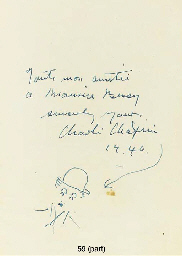

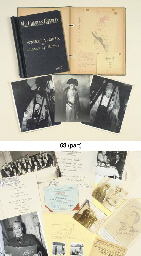


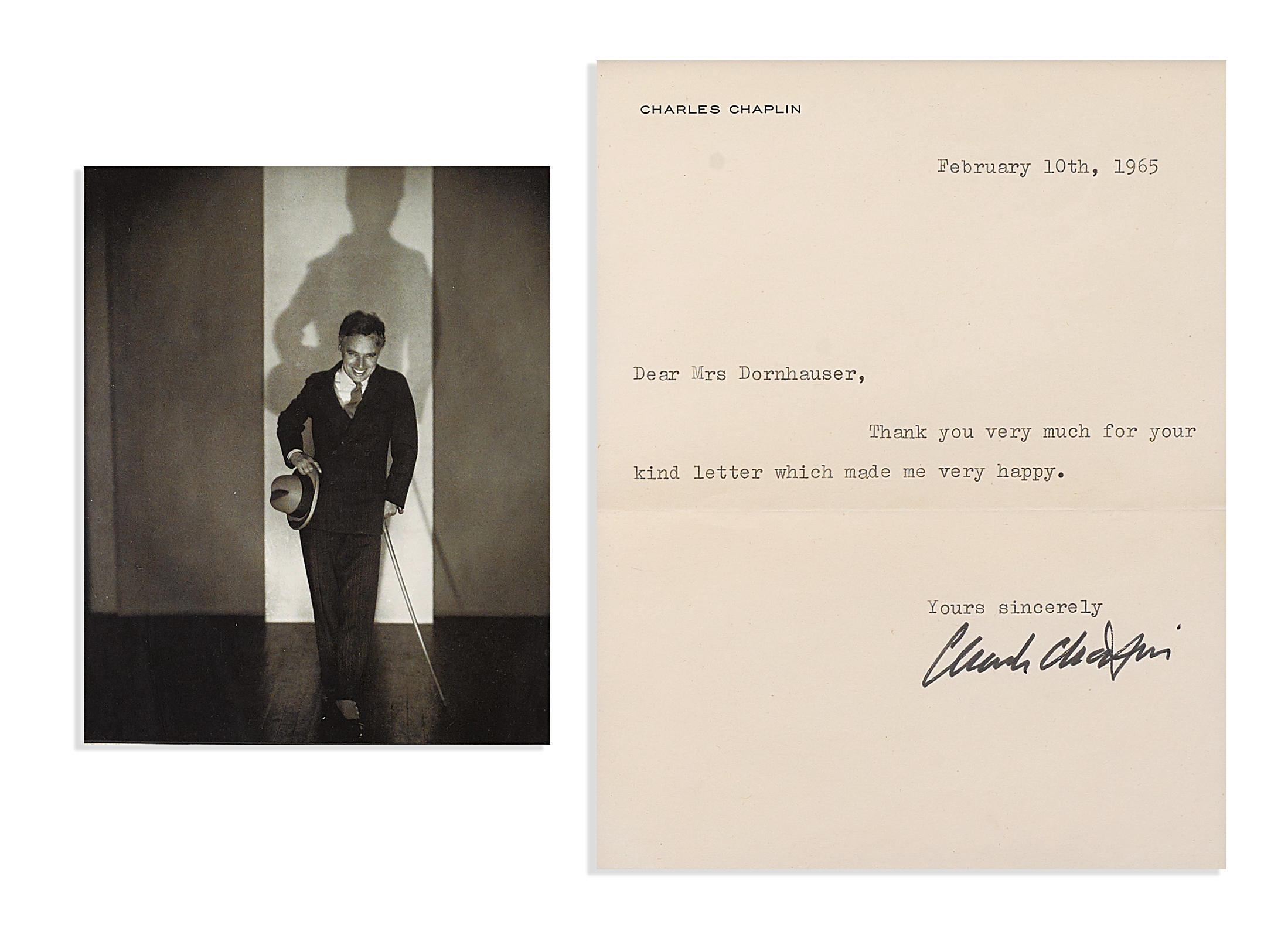

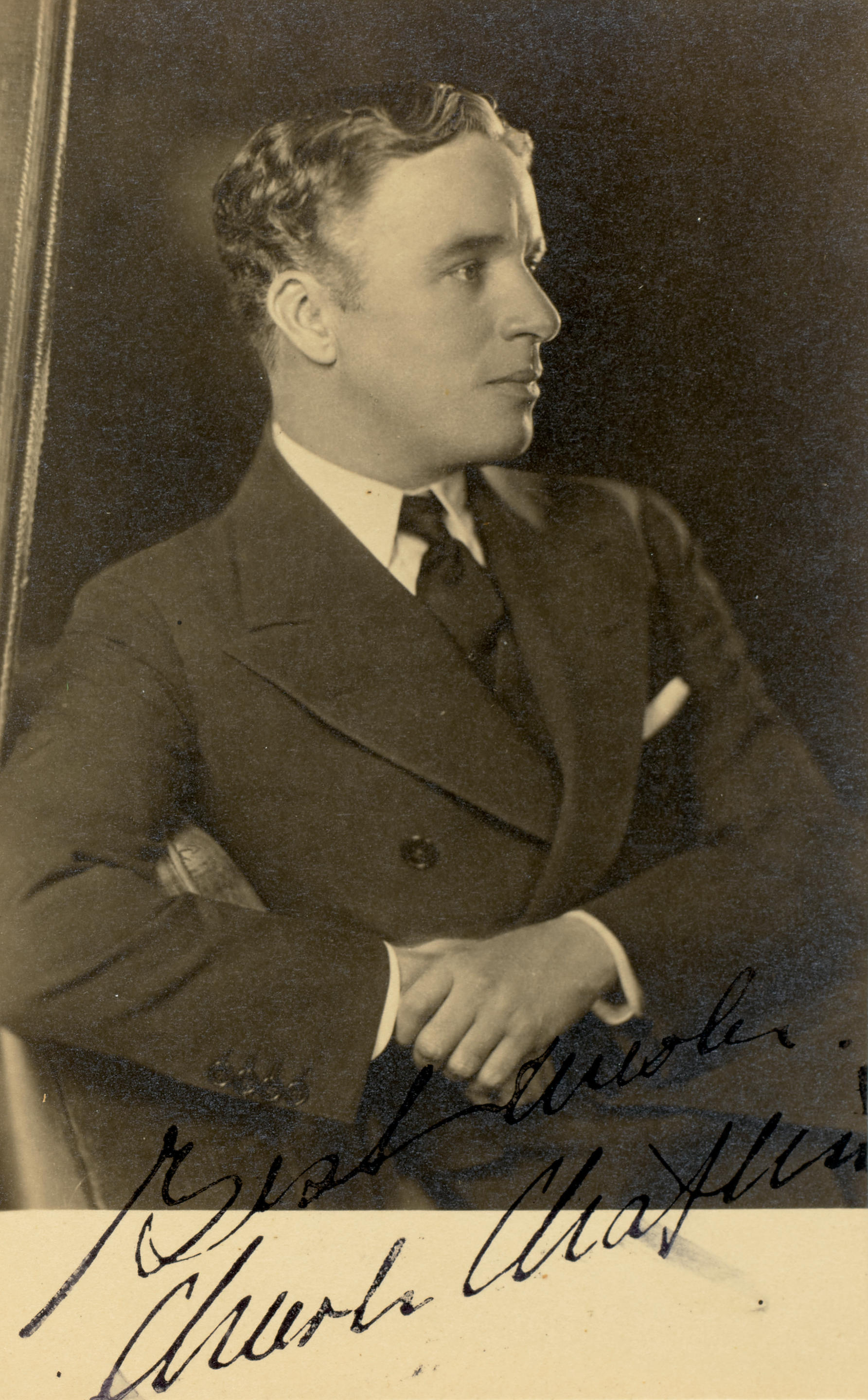

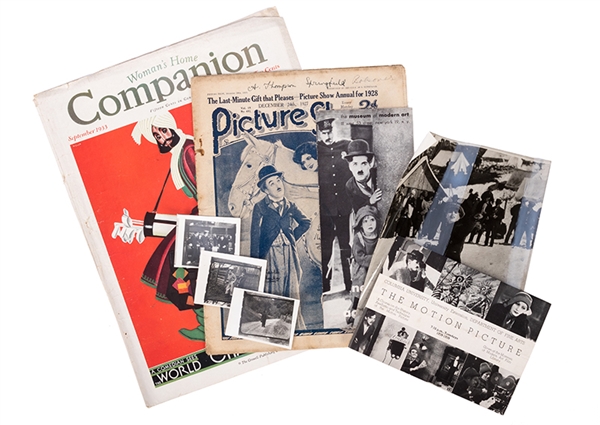
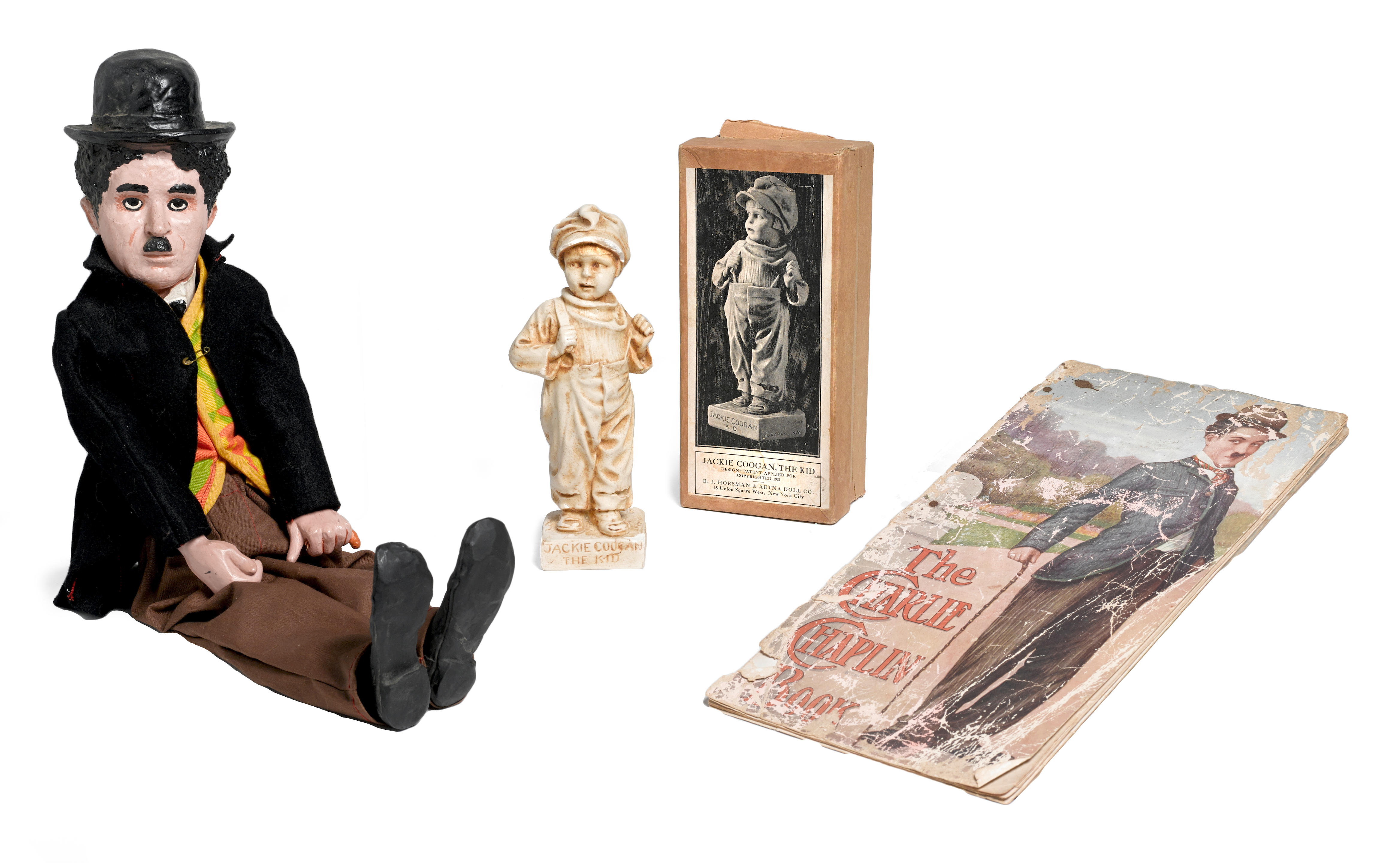
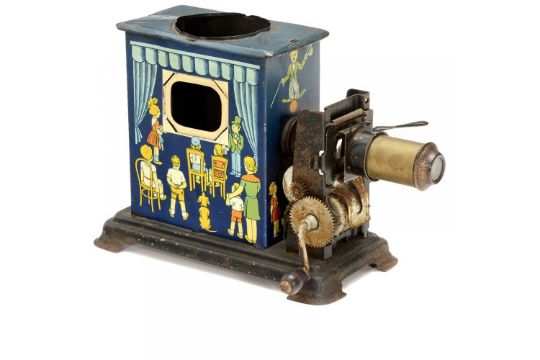
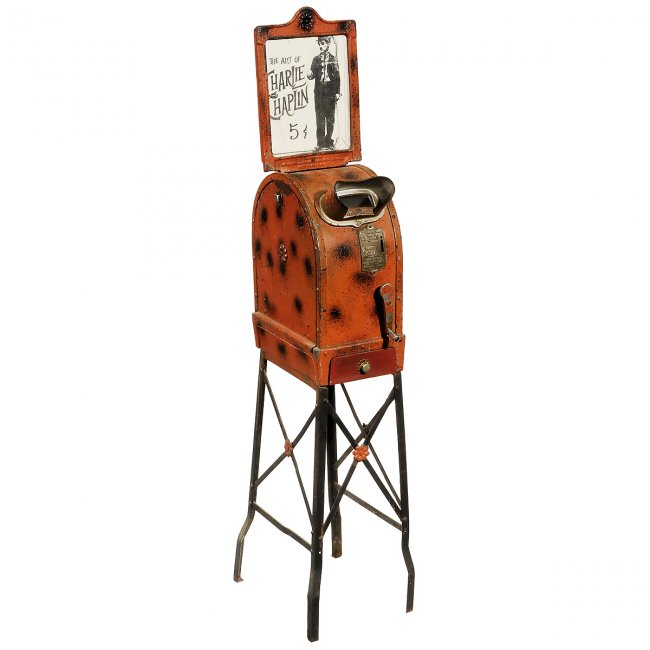
Try LotSearch and its premium features for 7 days - without any costs!
Be notified automatically about new items in upcoming auctions.
Create an alert